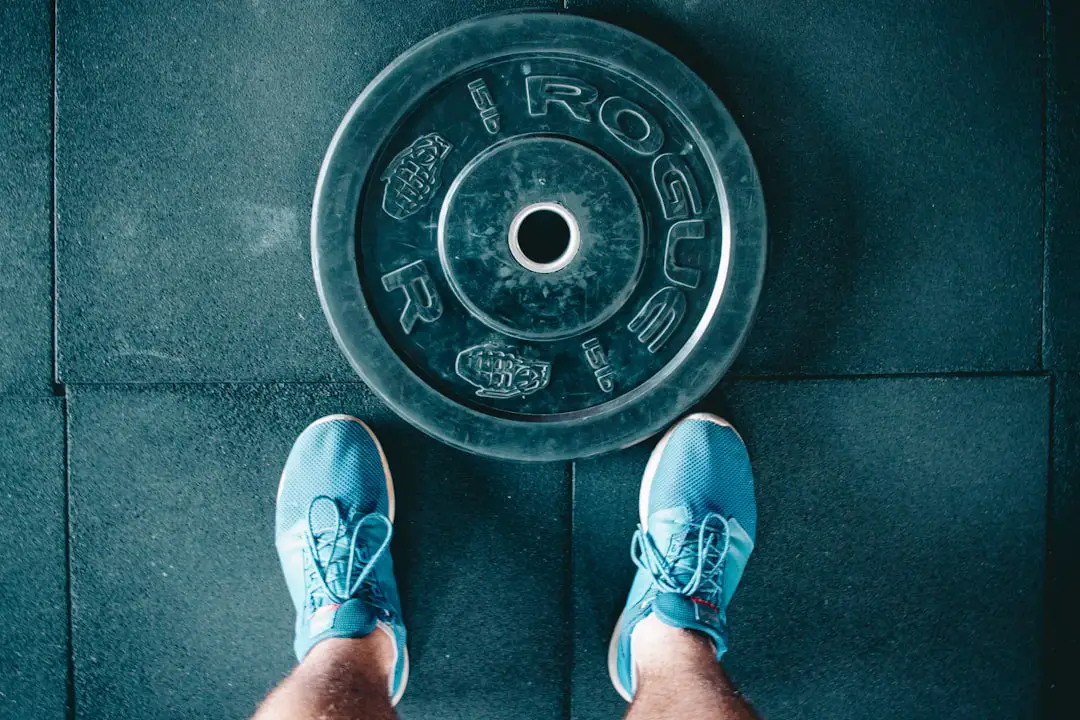Have you ever wondered if your daily hour-long walk is truly doing enough for your health? Maybe you lace up your shoes, hit the pavement, and feel like you’re ticking the wellness box—but is that really enough to boost your heart, shed pounds, or clear your mind? At Walkathon Benefits™, we’ve seen thousands transform their lives with walking, yet many still ask: “Is 1 hour walking a day enough?”
Here’s a little teaser: research shows that walking just 7,000 steps a day—which roughly equals an hour of brisk walking—can reduce your risk of premature death by up to 70%! But that’s just the tip of the iceberg. In this article, we’ll unravel the science, bust myths, and reveal 12 surprising truths about walking an hour daily. Plus, we’ll share insider tips on how to make every step count, whether you’re a casual stroller or a power walker aiming to supercharge your cardio. Ready to discover how to turn your daily walk into a health powerhouse? Let’s dive in!
Key Takeaways
- Walking 1 hour daily meets CDC guidelines for moderate aerobic activity and offers substantial health benefits.
- Pace matters: brisk or power walking delivers more cardiovascular and calorie-burning benefits than a leisurely stroll.
- 7,000 steps a day is a scientifically backed sweet spot for longevity and disease prevention.
- Moderate intensity walking is key—use the talk test or heart rate monitors to gauge your effort.
- Walking boosts mental health, brain function, and immune system alongside physical fitness.
- Proper gear like Brooks Ghost 15 shoes and Fitbit Charge 5 trackers can enhance your walking experience and motivation.
- Mixing intervals, hills, and arm swings can maximize fat burning and cardio benefits.
- Walking is safe and beneficial for all ages, including seniors, with appropriate precautions.
Ready to upgrade your walking routine?
Shop top-rated walking gear here:
- Brooks Ghost 15 Shoes on Amazon | Brooks Official Website
- Fitbit Charge 5 on Amazon | Fitbit Official Website
Table of Contents
- Quick Tips and Facts About Walking 1 Hour a Day 🚶♂️💡
- The Science and History Behind Daily Walking: Why 1 Hour Matters 🧬📜
- How Crucial Are Your Daily Step Counts for Health and Fitness? 👣📊
- Leisurely Stroll vs. Power Walking: Which Packs More Health Punch? 🐢⚡
- Is Your 1 Hour Walk Actually Moderate Intensity? Here’s How to Tell! 🕵️♀️❤️
- Maximizing Cardio Benefits: How to Turn Your Walk into a Fat-Burning Machine 🔥💪
- 10+ Surprising Health Benefits of Walking 1 Hour Daily You Didn’t Know! 🌟🩺
- Can Walking 1 Hour a Day Help You Lose Weight? The Truth Revealed ⚖️🥗
- How Walking 1 Hour Daily Impacts Mental Health and Brain Power 🧠💆♂️
- Walking for Seniors: Is 1 Hour a Day Safe and Beneficial? 👵👴✅
- Common Mistakes People Make When Walking 1 Hour Daily (And How to Fix Them) ❌✅
- Gear Up! Best Shoes and Gadgets to Enhance Your 1-Hour Walk 🏃♀️👟⌚
- How to Stay Motivated and Make Walking 1 Hour a Day a Habit You Love ❤️🎯
- Final Thoughts: Is 1 Hour Walking a Day Enough for a Healthy Lifestyle? 🤔✅
- Recommended Links for Further Walking Wisdom 🌐📚
- FAQ: Your Burning Questions About Walking 1 Hour a Day Answered! ❓🚶♀️
- Reference Links: Trusted Sources Behind Our Walking Insights 🔗📖
Quick Tips and Facts About Walking 1 Hour a Day 🚶♂️💡
Welcome to the ultimate walking guide! If you’ve ever wondered, “Is 1 hour walking a day enough?”, you’re in the right place. At Walkathon Benefits™, we’ve supported countless walkathons and witnessed firsthand how a simple daily walk can transform lives. Before we dive deep, here are some quick, energizing facts to get you started:
- ✅ 1 hour of moderate walking daily meets the CDC’s physical activity guidelines for adults (150 minutes/week of moderate aerobic activity).
- ✅ Walking 1 hour can burn approximately 200-400 calories depending on your pace and weight.
- ✅ Studies show walking 7,000+ steps daily reduces premature death risk by up to 70% (source).
- ✅ Brisk walking (about 3-4 mph) is more beneficial than a leisurely stroll for cardiovascular health.
- ✅ Walking improves mood, sleep, and brain function — a natural antidepressant!
- ✅ You don’t need fancy gear; a good pair of walking shoes is your best friend.
Curious how to tell if your walk counts as moderate intensity? Or how to supercharge your cardio benefits? Keep reading — we’re just getting warmed up! For a deep dive into walking’s health perks, check out our article Discover 20 Incredible Benefits of Walking That Will Transform Your Life in 2024! 🚶♀️✨.
The Science and History Behind Daily Walking: Why 1 Hour Matters 🧬📜

Walking is humanity’s oldest exercise — literally! From prehistoric times to today’s bustling cities, walking has been our primary mode of movement. But why is 1 hour a day the magic number?
The Evolution of Walking as Exercise
- Early humans walked miles daily for survival — hunting, gathering, migrating.
- Modern sedentary lifestyles have reduced average daily steps drastically, prompting health experts to recommend 150 minutes of moderate activity weekly (CDC guidelines).
- Walking fills this gap perfectly: low impact, accessible, and effective.
What Science Says About 1 Hour Walking Daily
- Research from the University Hospitals Cleveland Medical Center found that walking at least 7,000 steps daily (roughly 1 hour at a brisk pace) correlates with a 50-70% lower risk of premature death (study).
- Walking 1 hour five days a week equals 300 minutes — double the minimum recommended moderate exercise, offering robust cardiovascular and metabolic benefits.
- It’s a sweet spot: long enough to improve endurance and mood, short enough to fit busy schedules.
Fun Fact:
The Japanese practice of “Shinrin-yoku” or forest bathing often involves walking for an hour in nature, shown to reduce stress hormones and boost immunity (source).
How Crucial Are Your Daily Step Counts for Health and Fitness? 👣📊
If you’re tracking steps, you’re on the right track! But how important are those numbers really?
Step Count Benchmarks
| Step Count Range | Health Impact | Notes |
|---|---|---|
| < 5,000 steps | Sedentary | Increased risk of chronic diseases |
| 5,000 – 7,499 | Low active | Some benefits, but room to improve |
| 7,500 – 9,999 | Somewhat active | Good health benefits, reduced mortality risk |
| 10,000+ | Active | Optimal for fitness and weight control |
Why 7,000 Steps is a Game-Changer
- A 2021 study showed 7,000 steps daily is the threshold for significant health benefits, including lower cardiovascular risk (source).
- Continuous walking that raises your heart rate for at least 10 minutes at a time is more beneficial than scattered steps.
How to Track Your Steps Effectively
- Use devices like Fitbit Charge 5, Garmin Vivosmart 5, or Apple Watch Series 9.
- Set realistic goals: increase your daily steps by 500-1,000 weekly.
- Combine step tracking with heart rate monitoring for better intensity insights.
At Walkathon Benefits™, we encourage participants to focus on consistent movement over perfection. Even if you don’t hit 10,000 steps, 1 hour of walking daily is a fantastic baseline.
Leisurely Stroll vs. Power Walking: Which Packs More Health Punch? 🐢⚡
You might think all walking is created equal, but the truth is, pace matters — a lot!
Comparing Leisurely and Power Walking
| Aspect | Leisurely Walking (2 mph) | Power Walking (3.5-4 mph) |
|---|---|---|
| Heart Rate | Low (50-60% max) | Moderate (60-75% max) |
| Calories Burned | ~150 per hour | ~250-350 per hour |
| Cardiovascular Benefit | Mild | Significant |
| Muscle Engagement | Minimal | High (arms, core, legs) |
| Impact on Weight Loss | Limited | Effective |
Why Power Walking Wins for Fitness
- It elevates your heart rate into the moderate-intensity zone, improving heart and lung capacity.
- Engages more muscle groups, especially if you pump your arms and maintain good posture.
- Burns more calories, aiding weight management.
But Don’t Discount Leisurely Walks!
- Perfect for recovery days, seniors, or those new to exercise.
- Great for mental health, stress reduction, and socializing.
- Can be a stepping stone to more intense walking.
Our advice? Mix it up! Start with leisurely strolls and gradually add bursts of power walking. Your body and brain will thank you.
Is Your 1 Hour Walk Actually Moderate Intensity? Here’s How to Tell! 🕵️♀️❤️
Not all walks are created equal. To reap the full benefits, your walk should be moderate intensity. But how do you know if you’re there?
The Talk Test: A Simple, Reliable Gauge
- Low Intensity: You can sing your favorite song comfortably.
- Moderate Intensity: You can talk but not sing easily.
- High Intensity: Talking is difficult; you’re breathing hard.
Heart Rate Zones for Moderate Intensity
- Moderate intensity is about 50-70% of your maximum heart rate.
- Max heart rate roughly = 220 minus your age.
- For a 40-year-old, moderate zone = 90-126 beats per minute.
Tools to Measure Intensity
- Heart rate monitors (Polar H10, Garmin Forerunner 255).
- Fitness apps like Apple Health or Google Fit.
- Perceived exertion scales (rate your effort 1-10).
Signs Your Walk is Moderate Intensity
- Slight sweating after 10 minutes.
- Increased breathing but still able to hold a conversation.
- Feeling energized, not exhausted.
If your walk feels too easy, try increasing your pace, adding hills, or swinging your arms more vigorously.
Maximizing Cardio Benefits: How to Turn Your Walk into a Fat-Burning Machine 🔥💪
Ready to supercharge your 1-hour walk? Here’s how to get the most cardio bang for your buck.
Step-by-Step Guide to Boost Cardio Impact
- Warm-Up (5-10 minutes): Start at a leisurely pace to prepare muscles and heart.
- Increase Pace: Walk briskly enough to raise your heart rate into moderate intensity.
- Add Intervals: Alternate 1-2 minutes of power walking with 2-3 minutes of moderate pace.
- Incorporate Hills or Inclines: Walking uphill engages more muscles and increases calorie burn.
- Use Walking Poles: Brands like Black Diamond or Leki poles engage upper body and improve posture.
- Pump Your Arms: Swing arms vigorously to increase heart rate and calorie expenditure.
- Cool Down: Slow your pace for the last 5 minutes to prevent dizziness.
Bonus Tips for Fat Burning
- Walk on varied terrain (grass, trails) to challenge stabilizing muscles.
- Wear a weighted vest (start light, e.g., 5 lbs) to increase resistance safely.
- Stay hydrated and fuel up with a light snack before longer walks.
Real User Story
Jane, a 52-year-old Walkathon Benefits™ community member, added hill intervals to her daily walk and lost 15 pounds in 3 months — all without hitting the gym!
10+ Surprising Health Benefits of Walking 1 Hour Daily You Didn’t Know! 🌟🩺
Walking isn’t just about burning calories — it’s a powerhouse for your whole body and mind. Here’s what 1 hour daily can do for you:
| Benefit | Explanation & Source |
|---|---|
| 1. Improves cardiovascular health | Lowers blood pressure, cholesterol (AHA) |
| 2. Enhances mood and reduces anxiety | Releases endorphins, combats depression (Mayo Clinic) |
| 3. Boosts brain function and memory | Increases blood flow to the brain (NIH) |
| 4. Supports weight management | Burns calories, boosts metabolism (CDC) |
| 5. Strengthens bones and muscles | Improves bone density, muscle tone (NIH Osteoporosis) |
| 6. Improves sleep quality | Regulates circadian rhythms (Sleep Foundation) |
| 7. Enhances joint mobility | Reduces stiffness and arthritis symptoms (Arthritis Foundation) |
| 8. Lowers risk of type 2 diabetes | Improves insulin sensitivity (ADA) |
| 9. Boosts immune system | Regular moderate exercise enhances immunity (Harvard Health) |
| 10. Promotes longevity | Linked to longer lifespan (JAMA) |
| 11. Fosters social connections | Group walks improve community engagement (Walkathon Benefits™ Community) |
Walking truly is a holistic health elixir!
Can Walking 1 Hour a Day Help You Lose Weight? The Truth Revealed ⚖️🥗
Let’s address the million-dollar question: Can walking 1 hour daily help you shed pounds?
The Calorie Burn Equation
- Walking 1 hour briskly burns roughly 250-350 calories depending on weight and pace.
- To lose 1 pound, you need a calorie deficit of about 3,500 calories.
Weight Loss Realities
- Walking alone can contribute to weight loss but works best combined with a balanced diet.
- Increasing intensity or adding intervals boosts calorie burn.
- Consistency is key — daily walks add up over weeks and months.
Other Benefits for Weight Control
- Walking preserves lean muscle mass during weight loss.
- Improves metabolism, especially in women aged 35-50 (source).
- Reduces visceral fat, the dangerous belly fat linked to chronic disease.
Walkathon Benefits™ Tip:
Pair your walk with mindful eating and strength training for optimal results. Remember, slow and steady wins the race!
How Walking 1 Hour Daily Impacts Mental Health and Brain Power 🧠💆♂️
Walking is a natural mood lifter and brain booster — no prescription needed!
Mental Health Perks
- Releases serotonin and endorphins, reducing anxiety and depression (Mayo Clinic).
- Lowers cortisol (stress hormone) levels.
- Improves sleep quality, which supports mental resilience.
Brain Benefits
- Increases hippocampus size, improving memory and learning (NIH).
- Enhances creativity and problem-solving — ever had your best ideas on a walk?
- Reduces risk of cognitive decline and dementia.
Anecdote from Our Team
One of our Walkathon Benefits™ coordinators swears by her daily walks to clear her mind before big fundraising events — “It’s like hitting the reset button!”
Walking for Seniors: Is 1 Hour a Day Safe and Beneficial? 👵👴✅
Seniors often ask if walking 1 hour daily is safe — the answer is a resounding yes, with some caveats.
Benefits for Older Adults
- Improves balance and reduces fall risk.
- Maintains joint flexibility and muscle strength.
- Enhances cardiovascular health and mental sharpness.
- Supports social interaction when walking in groups.
Safety Tips
- Start slow and build up to 1 hour.
- Use supportive shoes and consider walking poles for stability.
- Stay hydrated and avoid extreme weather.
- Consult a healthcare provider if you have chronic conditions.
Recommended Walking Aids
- Hoka One One Bondi 8 shoes for cushioned support.
- Black Diamond Trail Pro Shock Trekking Poles for balance.
Common Mistakes People Make When Walking 1 Hour Daily (And How to Fix Them) ❌✅
Even the best walkers can slip up. Here’s what to watch out for:
Mistakes
- ❌ Walking too slowly to gain benefits.
- ❌ Poor posture leading to aches and injuries.
- ❌ Wearing inappropriate shoes causing blisters or pain.
- ❌ Ignoring hydration and nutrition.
- ❌ Walking the same flat route without variation.
How to Fix Them
- ✅ Use a pedometer or app to monitor pace and steps.
- ✅ Keep shoulders back, engage core, and swing arms.
- ✅ Invest in quality walking shoes like Brooks Ghost 15 or New Balance 928v3.
- ✅ Drink water before, during, and after walks.
- ✅ Mix routes with hills, trails, or intervals.
Gear Up! Best Shoes and Gadgets to Enhance Your 1-Hour Walk 🏃♀️👟⌚
Great gear can make your walk more enjoyable and effective. Here’s our top picks:
| Product | Design (1-10) | Functionality (1-10) | Durability (1-10) | Overall (1-10) |
|---|---|---|---|---|
| Brooks Ghost 15 | 9 | 9 | 8 | 9 |
| Hoka One One Bondi 8 | 8 | 9 | 9 | 8.5 |
| Fitbit Charge 5 | 8 | 10 | 8 | 8.5 |
| Garmin Vivosmart 5 | 8 | 9 | 8 | 8 |
| Black Diamond Trekking Poles | 7 | 9 | 9 | 8 |
Why These?
- Brooks Ghost 15: Cushioned, breathable, perfect for long walks.
- Hoka Bondi 8: Maximum cushioning, ideal for seniors or those with joint pain.
- Fitbit Charge 5 & Garmin Vivosmart 5: Track steps, heart rate, and intensity easily.
- Black Diamond Poles: Add upper body workout and improve posture.
👉 Shop Walking Gear on:
How to Stay Motivated and Make Walking 1 Hour a Day a Habit You Love ❤️🎯
Motivation can be tricky, but we’ve got you covered.
Tips to Keep You Moving
- Set small, achievable goals and celebrate wins.
- Walk with friends or join a local walkathon (Community Engagement).
- Listen to podcasts, audiobooks, or your favorite tunes.
- Track progress with apps like Strava or MapMyWalk.
- Reward yourself with new gear or a massage after milestones.
Personal Story
Our Walkathon Benefits™ team member, Carlos, started walking daily to manage stress. He joined a local charity walk and now leads a weekly group — turning exercise into friendship and fun.
Final Thoughts: Is 1 Hour Walking a Day Enough for a Healthy Lifestyle? 🤔✅
The short answer: Yes! Walking 1 hour a day is a powerful, accessible way to boost your health, mood, and longevity. It ticks many boxes for cardiovascular fitness, mental well-being, weight management, and more.
But remember:
- Intensity matters — aim for moderate pace most days.
- Consistency beats intensity alone — make walking a habit.
- Combine walking with strength training and good nutrition for best results.
As the experts at University Hospitals say, “Exercise is medicine. The best exercise is the one you do regularly” (source).
So lace up, step out, and enjoy your daily dose of wellness!
Recommended Links for Further Walking Wisdom 🌐📚
- Discover 20 Incredible Benefits of Walking That Will Transform Your Life in 2024! 🚶♀️✨
- CDC Physical Activity Guidelines
- American Heart Association: Walking for Heart Health
- Mayo Clinic: Walking for Mental Health
- Arthritis Foundation: Walking Tips
FAQ: Your Burning Questions About Walking 1 Hour a Day Answered! ❓🚶♀️

Q: Can I split my 1 hour walk into shorter sessions?
A: Absolutely! Three 20-minute walks can be just as effective as one continuous hour.
Q: Is walking enough if I don’t do other exercises?
A: Walking covers many bases but adding strength training is recommended for muscle health.
Q: How fast should I walk to lose weight?
A: Aim for a brisk pace (~3.5 mph) where talking is possible but singing is difficult.
Q: Can walking replace running?
A: For many, yes! Walking 1 hour five days a week can equal the cardiovascular benefits of running 20 minutes three times a week (source).
Q: What if I have joint pain?
A: Walking is low-impact and often recommended, but consult your doctor for personalized advice.
For more FAQs, visit our Physical Fitness Tips section.
Reference Links: Trusted Sources Behind Our Walking Insights 🔗📖
- University Hospitals Cleveland Medical Center: Is Walking Good Enough Exercise?
- CDC Physical Activity Guidelines: Adults
- Mayo Clinic: Exercise and Stress
- American Heart Association: Walking
- NIH: Brain Benefits of Exercise
- Sleep Foundation: Exercise and Sleep
- Arthritis Foundation: Walking Tips
Ready to take your walking journey to the next level? Stay tuned for our upcoming posts on walkathon fundraising strategies and community engagement! Meanwhile, keep stepping strong with Walkathon Benefits™. 🚶♂️💪
Conclusion

So, is 1 hour of walking a day enough? The answer is a confident YES — with some important nuances. Walking for an hour daily, especially at a moderate or brisk pace, delivers a powerful punch of health benefits: from reducing your risk of chronic diseases and boosting mental health, to aiding weight management and enhancing longevity. It’s accessible, low-impact, and sustainable — the kind of exercise you can stick with for life.
But remember, intensity matters. A leisurely stroll is great for mental clarity and recovery, but to maximize cardiovascular and fat-burning benefits, aim to elevate your heart rate into the moderate zone. Mix in hills, intervals, or walking poles to keep your body challenged and engaged.
We also covered how daily step counts, proper gear, and motivation strategies can transform your walking routine from a mundane chore into a joyful, life-enhancing habit. Whether you’re a senior, a busy professional, or a beginner, walking 1 hour a day can be your cornerstone of health.
No need for fancy gym memberships or complicated workouts — just your feet, a good pair of shoes, and a commitment to yourself. As the experts say, “The best exercise is the one you do regularly.” So, why not make walking your daily medicine?
Recommended Links for Shopping and Learning 🌐🛒
👉 Shop Walking Shoes and Gear:
- Brooks Ghost 15: Amazon | Brooks Official Website
- Hoka One One Bondi 8: Amazon | Hoka Official Website
- Fitbit Charge 5: Amazon | Fitbit Official Website
- Garmin Vivosmart 5: Amazon | Garmin Official Website
- Black Diamond Trail Pro Shock Trekking Poles: Amazon
Recommended Books on Walking and Fitness:
- “Walk Your Way to Better Health” by Dr. Michael Mosley — Amazon
- “The Joy of Walking” by John Francis — Amazon
- “Walking for Fitness” by Dr. James O. Hill — Amazon
FAQ: Your Burning Questions About Walking 1 Hour a Day Answered! ❓🚶♀️

How many calories can I burn by walking 1 hour a day?
The calories burned depend on your weight, walking speed, and terrain. On average:
- A person weighing 155 lbs burns about 280 calories walking briskly (3.5 mph) for 1 hour.
- Heavier individuals burn more; lighter individuals burn fewer.
- Adding hills or intervals can increase calorie burn by 20-50%.
Walking is a great way to create a calorie deficit, especially when paired with healthy eating.
Read more about “How Many Miles Should I Walk Daily? 9 Expert Tips for 2025 🚶♂️”
What are the benefits of walking 1 hour a day for weight loss?
Walking 1 hour daily helps:
- Burn calories steadily, contributing to fat loss.
- Preserve lean muscle mass, important for metabolism.
- Improve insulin sensitivity, reducing fat storage.
- Reduce visceral (belly) fat linked to chronic diseases.
However, weight loss is most effective when walking is combined with a balanced diet and other forms of exercise like strength training.
Read more about “Can Walking Really Slash Your Risk of Diabetes & Heart Disease? 🚶♀️ (2025)”
Can walking 1 hour a day improve my overall health and wellbeing?
Absolutely! Walking:
- Lowers blood pressure and cholesterol.
- Enhances mood by releasing endorphins.
- Boosts brain health and memory.
- Improves sleep quality.
- Strengthens bones and joints.
- Supports immune function.
It’s a holistic health booster that benefits body and mind alike.
How does walking 1 hour a day compare to other forms of exercise for lowering blood pressure?
Walking at a moderate pace for 1 hour daily is comparable to other moderate aerobic exercises like swimming or cycling in lowering blood pressure. Studies show:
- Regular walking can reduce systolic blood pressure by 5-10 mm Hg.
- It’s especially effective for people with mild to moderate hypertension.
- Consistency is key; benefits increase over time.
For more intense blood pressure control, combining walking with resistance training and dietary changes is recommended.
Can walking 1 hour a day help with joint pain or arthritis?
Yes! Walking is low-impact and helps:
- Maintain joint flexibility.
- Strengthen muscles around joints, reducing strain.
- Decrease stiffness and pain.
Always start slow and consult your healthcare provider if you have severe arthritis or joint issues.
Is walking 1 hour a day safe for seniors?
Generally, yes — walking is one of the safest forms of exercise for older adults. It improves balance, cardiovascular health, and mental sharpness. Seniors should:
- Start at a comfortable pace.
- Use supportive shoes and assistive devices if needed.
- Avoid extreme weather conditions.
- Consult their doctor before starting.
Reference Links: Trusted Sources Behind Our Walking Insights 🔗📖
- University Hospitals Cleveland Medical Center: Is Walking Good Enough Exercise?
- Centers for Disease Control and Prevention (CDC): Physical Activity Guidelines for Adults
- Mayo Clinic: Exercise and Stress
- American Heart Association: Walking for Heart Health
- National Institutes of Health (NIH): Exercise and Brain Health
- Sleep Foundation: Exercise and Sleep Quality
- Arthritis Foundation: Walking Tips for Arthritis
- Prevention Magazine: 15 Health Benefits of Walking, According to Doctors and Trainers
Thanks for walking through this comprehensive guide with us! Keep stepping strong, and remember: every step counts toward a healthier, happier you. 🚶♂️💙
